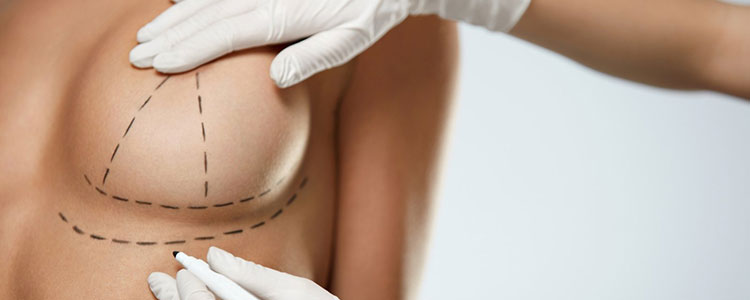MASTOPEXY

What can make a mastopexy
The normal aging process can slowly alter the breast tissues making the breasts droopy to a greater or lesser degree. Often that can happen after pregnancy and can empty the breasts and stretch marks present mainly in the top of the upper pole that in turn worsen the post-pregnancy breast ptosis.
A mastopexy removing excess tissue and reshaping the mammary gland
restores form and can raise the breast completely. The intervention may be limited to only a fraction of the anatomic structure and be done in combination with other interventions such as Breast augmentation
What is a mastopexy
During a mastopexy is removed with the scalpel excess skin. The amount of skin removed is measured with precision to get a result symmetrical on both breasts. The mammary gland below is then appropriately shaped and repositioned upward to obtain the particular form.
What to expect from a mastopexy
The intervention of mastopexy leaves a fine scar barely visible around all'areola which is normally reduced in size. Other times, depending on the technique used is also necessary to make a vertical scar in the lower pole of the breast. That tends to disappear after a few times. Within a few months after the employment will take the nice definitive form. In the beginning, most often the breast has a strange shape, which is quite normal if the surgery has been right performed. The intervention does not affect a possible post-operative pregnancy.
Anesthesia and hospitalization
This intervention can be performed safely in day surgery by your surgeon under local anesthesia with sedation with an injection just perceptible helps you relax to a state of dream. Immediately after the intervention will accompany them home.
Those who choose for personal reasons general anesthesia must calculate the in-patient clinic visits and make necessary the interview with the anesthetist the day before. Given that general anesthesia always involves more risk.
Precautions before
To minimize the risks and complications observed closely the directions of your surgeon both before and after the procedure.
Tell him if ever suffer from allergies or other chronic diseases. If you are bruising easily or bleed excessively in the case of small wounds will take several tests to rule out problems of your blood coagulation.
Painkillers are contraindicated such aspirin during the two weeks preceding the intervention because their active ingredient interferes with blood coagulation and can cause excessive bleeding. It’s better to avoid alcohol and sleeping pills.
How to prepare
Before treatment, it is necessary to do a mammography and an ultrasound to be sure there are no nodular breast tissue neoplasies. Get the tablets and two or three small items refrigerated items that you can support on tissues just made. The evening before, take the antibiotic as prescribed by your surgeon.
Try to be rested.
The night before is good to take the antibiotic tablets that will be indicated by your surgeon.
How is running the intervention
Regarding mastopexy, various techniques are appropriately chosen by your surgeon based on the defect. If it is a modest ptosis simply run a periareolar scar that can get a good result without remodeling the gland. If the ptosis is more marked at least 2.5 centimeters requires a vertical scar running from the lower areola pole and end in the submammary fold, however, the result would not be stable over time. Before the surgeon track with a paint fine lines of engraving to obtain optimum results. Then you run for local anesthesia then proceed to the removal of excess skin with great delicacy and precision. If necessary we shape not only the skin but even the gland surgically to bring up the glandular breast tissue that has migrated to the bottom.
Once the desired shape is reached we suture the tissue through thin and absorbable wires introduced under the skin so as not to leave visible scars. Sometimes if you want to increase the volume of the breast and lift it can also introduce a prosthesis.
The intervention takes about 2-2,5 hours.
What happens after surgery
Immediately after the intervention should expect swelling more or less accentuated that resorbs after 10-12 days. During these days hold cold tablets on the top of the upper pole to reduce faster the post-operative oedematous effect.
The wire suture should not be removed because they are absorbable and are located below the skin.
The scars will be reduced to thin lines once or not at all visible after about 12 months.
Possible complications
Bruising and bleeding are extremely rare but can happen even 1 or 2 days after the procedure.
In patients who have difficulty healing, the suture lines may appear reddened and rough for several weeks. In this case, the surgeon can recommend the appropriate treatment.
A slight numbness after surgery is normal and tends to disappear in a few months.
Precautions after surgery
Do not use creams or tricks on tissues for 2 weeks following surgery.
Always wear a sports bra day and night without underwire for 6 months after the operation and possibly use for at least three months patches along the tension lines of the wound to enhance healing.
